Last updated on January 18th, 2022 at 10:06 am
In the summer of 2011, the North American Wood Ape Conservancy conducted a long-term field research operation in the Ouachita Mountains of Oklahoma. Following is our report on the operation’s methods, observations, and conclusions.
Prologue
From Spring 2006 to Summer 2011, the North American Wood Ape Conservancy (NAWAC) carried out a plan to keep arrays of camera traps running continuously to increase the odds of documenting wildlife. Dozens of cameras were placed in remote locations in East Texas and the Ouachita Mountains of Arkansas and Oklahoma, locations of known wood ape activity, as determined by the NAWAC during field projects carried out in earlier years. This collaborative enterprise was named Operation Forest Vigil. It was unlike anything ever attempted by a wood ape-related organization, at least in recent decades.
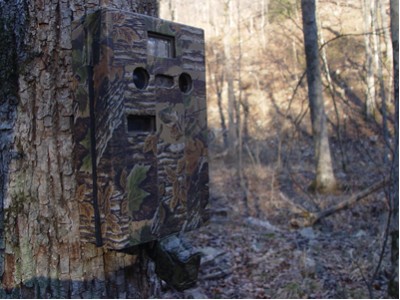
Forest Vigil was a monumental effort, extremely demanding in terms of sheer human effort, time, and expense. Camera maintenance trips typically required daylong hikes through miles of extremely rough terrain. Although no photographs of the target species were obtained, much was learned through these efforts. One of the beneficial consequences of the five-year project was the special camaraderie that develops when teams take on demanding, often dangerous, tasks, and successfully complete them. In very real ways, Forest Vigil prepared the membership of the NAWAC for what was to follow, an even more ambitious project dubbed Operation Endurance.
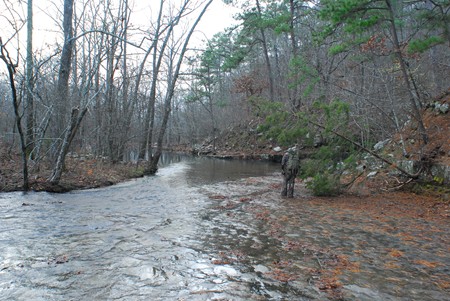
Introduction
The premise for Operation Endurance was based on evaluations of previous experiences indicating that prolonged stays in an area occupied by one or more wood ape creatures could result in expressions of animal behavior of a more overt nature than shorter visits of, say, one to three days. Plans were devised to test this proposition.
From 4 June to 20 August 2011, teams of two to five members of the NAWAC spent from several days to weeks in a near continuous visitation within a location thought to represent occupied wood ape habitat. Generally speaking, teams went in for one-week periods, at which point another team relieved them. Twenty-three members took part in the operation.
Study Area
Purported wood ape sightings and related phenomena have been reported from the study site and the general locale for years. Based on assessments of such reports, NAWAC members were reasonably confident sufficient reasons existed to suggest the probable ongoing presence of wood apes; however, no member of the NAWAC had ever seen a wood ape in the area.
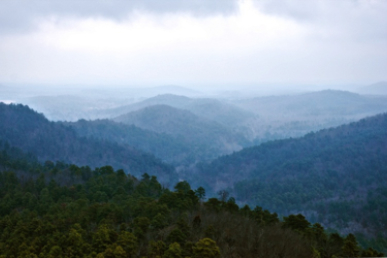
The study area was located in an isolated part of the Ouachita Mountains along the Oklahoma and Arkansas state line. Only one extremely rough and rocky road leads to the property. Cameras at the gated and locked entrance and elsewhere monitored the comings and goings of visitors, but months often passed between such visits, and those were typically camera maintenance assignments carried out by NAWAC members. No residences exist for miles in all directions. A few primitive hunting cabins stand on property situated within the study area, set in the midst of 60,000 acres of wilderness and further surrounded by 550,000 acres of Ouachita National Forest.
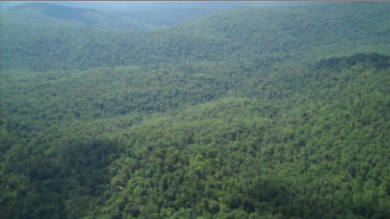
The summer temperatures were hot, often reaching the 90s, and humidity levels were high. The mountainous terrain is steep and rocky, making for treacherous footing. Greenbrier (Smilax spp.) is abundant, as are ticks and several species of venomous snakes. The mixed deciduous forest is mature and the vegetation is extremely thick.
Methods
Teams and team members were free to be as active or passive as they preferred. Teams had access to several third-generation night vision units and eight or more Reconyx game cameras, as well as, on a more limited basis, high quality sound recording equipment and thermal imagers. Cameras were positioned and repositioned in response to suspected patterns of activity noted by team members. Observers were also positioned in what were considered strategic vantage points, based again on reviews of suspected activity noted by current or previous teams. Departing teams met with newly arriving teams for briefings and recommendations.
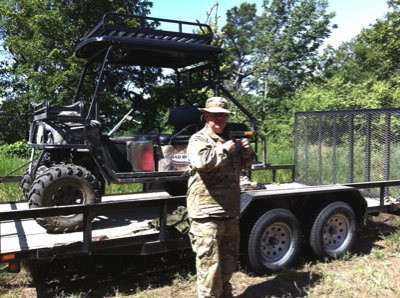
Each team, designated after the NATO phonetic alphabet, kept a detailed journal of observations and undertakings. There was no cell phone access from the cabin area, so it was not possible to provide timely updates, but each team submitted a detailed written report to the NAWAC soon after their weeklong deployments were over. Initial analyses of these logs indicated what appeared to be a possible pattern of activity levels, with low or intermittent intensities of possible behaviors, such as distant wood knock sounds, building to more intense records of closer and more varied events every few days.
The dense overhead canopy greatly limited nighttime vision, and the thick vegetation surrounding the cabins served to severely restrict lines of sight. This made it nearly impossible to detect sound sources sometimes originating mere yards from the main cabin. The terrain and dense foliage made daytime observations from other vantage points difficult as well. This situation forced teams to depend upon camera traps to keep constant watch in places where, it was hoped, wood apes might show up.
Observations
From the beginning of the operation, team members noted the often-resounding noises of what sounded like wood knock sounds emanating from the forest and mountainside. At times team members used a wooden baseball bat to hit against trees and posts in an effort to replicate and reply to the sounds. The sounds were generally produced at night, but quite a few were also heard during daylight hours during the second half of Operation Endurance. On numerous occasions they appeared to originate from close to the location of the observers, within fifty to one hundred yards. Sometimes the sounds came from several locations within a matter of seconds in an apparent display of response to other knocks.
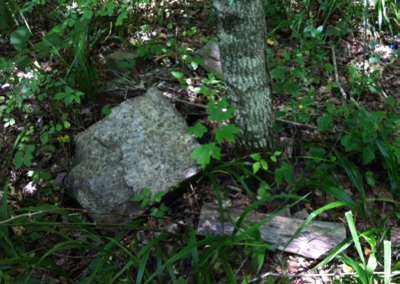
Many times the noises issued forth from the same direction and apparent location over the course of weeks. For example, each of the first five teams noted loud clear wood knock sounds coming from northeast of the main cabin, and sounding quite close. While walking a trail near the base of the mountain, two Delta team members made an unusual finding: a piece of split firewood lying on the ground next to a large rock and a tree about six inches in diameter. Hitting the firewood against the tree and the rock produced sounds exactly like those heard from that same location on many nights.
AUDIO: Team discussing noises near Jerry Hestand’s tree stand, then another knock is heard
Rock throwing was also noted by each of the teams on numerous occasions. Although the NAWAC observers noted the occasional drop of hickory nuts, they also observed the sharper and much louder bangs of rocks striking the cabins. One cabin in particular, situated near the base of a mountain, seemed to be a favorite target. Team members repeatedly cleared the roof of rocks during the operation and checked regularly for new rocks. On at least one-half dozen occasions during the following weeks, what observers interpreted as rock impacts during the night were confirmed the following morning with the discovery of new rocks on the roof.
AUDIO: Sound of possible rock impact and loud knock
The NAWAC observers heard other forms of behaviors such as a variety of bizarre and distinctive vocalizations and apparent nocturnal stalking and harassment activities they could not ascribe to known species. Sounds resembling heavy running footfalls were noted by several members in association with other events, as when investigating a wood knock sound, checking for the source of a building being repeatedly struck, or after flushing animals during the night that retreated unseen through the thick vegetation or up the steep mountainside.
AUDIO: Sound of approaching footfalls to recorder location and subsequent rapping noise
The Delta team brought a Marantz audio recorder with a Sennheiser microphone; it was used one night to document sounds and it produced some extremely interesting results, including vocalizations resembling some of those captured decades earlier in northern California, the so-called Sierra Sounds. The recorded vocalizations were sent to bear expert Dr. Lynn Rogers for an opinion; he reported back that the sounds were not made by black bears.
AUDIO: Vocalization
As a result of working with the Reconyx cameras on a near daily basis for weeks on end, team members arrived at surprising, and disappointing, impressions regarding the cameras’ usefulness. For example, on one occasion during the first week in June, a very large black bear approached the cabin where the Alpha team was staying, entering a field of view covered by three cameras. No pictures were obtained. In the following days and weeks, team members closely approaching cameras, or even intentionally passing back and forth in front of cameras, also failed to produce images. The high summer temperatures may have played a role in this failure to obtain photos. Upon contacting Reconyx technicians to report these observations, Chris Buntenbah was informed that another factor could be related to the built-in design which required animals or subjects to pass from one detection zone to another zone to trigger the units.
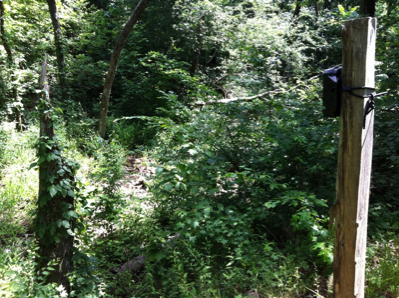
In spite of the failures of the cameras, team members made two daytime observations of wood apes during the second month of Operation Endurance. Foot impressions were observed, but it proved impossible to track the creatures very far. Two apparent foot impressions, one small and one large, found in soft patches of soil were cast in the following weeks.
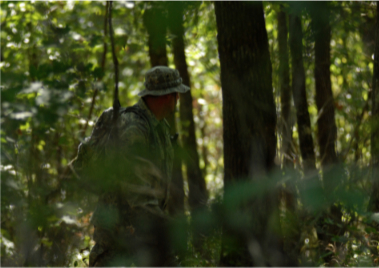
The first creature, observed on 3 July 2011 at approximately 7:15 PM, was described by the NAWAC observer as a smoothly walking brown-colored upright figure approximately 6.5 feet tall or taller. The observation lasted about two or three seconds and was made at a distance of about thirty yards. Team members subsequently observed tracks and foot imprints, one displaying what appeared to be toe impressions. Heel-to-heel distances between some of the prints varied from 52 to 64 inches. One print was seen to have crushed a limb that remained unaffected when stood on by a team member weighing 200 pounds, an indication that the print maker was very heavy.
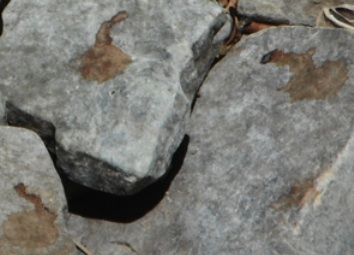
The NAWAC investigator fired upon the animal with an auto-loading shotgun in an attempt to collect a specimen. The creature ran off and no blood was found before the loss of daylight. Additional teams returned to the area in the following days to continue the search for evidence. Stones with apparent blood stains were subsequently discovered a short distance east of the original sighting location in the dry creek bed that is adjacent to the cabins. Several, but not all, of the rocks were collected. Another team was sent to collect the remaining rocks, but a hard rainfall took place on the day of their arrival, and the team was unable to locate any more of the rocks.
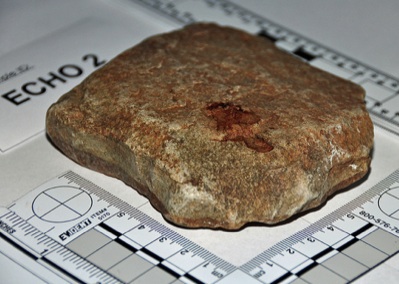
The member who identified and followed the blood trail is a very experienced trapper, tracker, and lifelong hunter. He stated, “It was traveling down the rocky creek bed for a fair distance and dropped very little blood.” In his opinion, the coloring, sparse distribution and drop pattern of the blood evidence was not indicative of a mortally, or even significantly, wounded animal. The observed blood pattern, he said, was almost certainly produced by a slow steady drip from a flesh wound, probably to either an arm or leg.
Using the Bluestar Forensic blood-visualizing agent, the material on one of the collected rocks tested positive for the presence of blood. Genetic testing is planned.
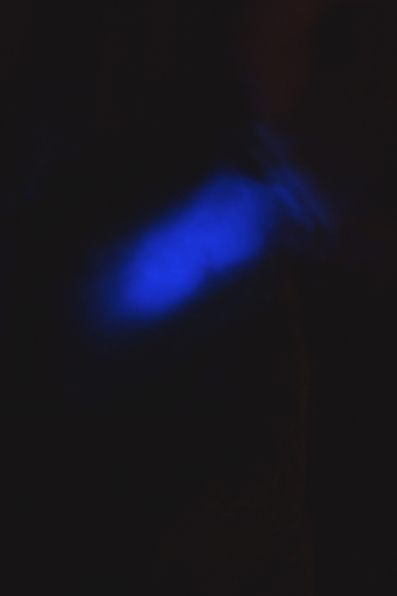
Conclusions
- Cameras should be used in timed mode, where pictures are automatically taken every few seconds or so, rather than relying on the detection of heat or movement in order to take pictures. This obviously places severe limits on the duration that cameras can be used, but it is seen as a necessary adjustment, at least while teams are in the field.
- To a person, team members left the study area convinced that wood apes produce sounds resembling or produced by tree knocks, this despite the fact that many, perhaps most, held an opposite opinion prior to their participation in Operation Endurance.
- Rocks hitting metal produced some of the sounds heard at night that resembled rocks hitting metal.
- Observations strongly indicate that at least a few wood apes dwell in the area, supporting the idea that the species is not necessarily solitary, as has often been proposed.
- Sightings by our own members of large bipedal hair-covered creatures lend credence to the theory that wood apes were responsible for some of the recorded phenomena. The possibility that human hoaxers were hiding from NAWAC team members for weeks during the height of summer, avoiding detection and searches in that remote area, and waiting until the wee hours of the morning to scramble around treacherous mountain slopes without light, often in pitch black conditions, to vocalize, throw rocks, and hit trees is even less likely than the existence of the wood ape.
- While perhaps a foregone conclusion, spending more time in the field increased the quantity and quality of compelling observations. At this point, there should be little doubt that protracted field studies of weeks or months must be favored over much shorter and much less productive weekend events. There may be sufficient reason to postulate that these animals are likely conditioned that human forays into the remote wilderness habitats they favor usually only consist of a few days in length; all that is required is to simply wait out any human visitors and within a few short days or even hours, humans will leave. Operation Endurance ran contrary to such predictable human behavior.
- Events experienced by team members produced an overall perception that the creatures were extremely intelligent, wary yet curious. For example, by all appearances, wood apes definitely take notice of the presence of cameras, approaching with circumspection, if they approach at all. Such behavior is not at all far-fetched; indeed, wildlife biologists have recently noted similar cautious behavior among alpha coyotes in relation to camera traps (Sequin, Brussard, Jaeger, & Barrett, 2003). Members believe we have come very close to obtaining images; we will continue to employ cameras for documentation purposes, in spite of the noted limitations.
With thanks to the following NAWAC members, without whose dedication this operation would not have been possible:
Alpha team: Daryl Colyer, Travis Lawrence, Mike Mayes, Tod Pinkerton
Bravo team: Bill Coffman, Travis Lawrence, Mark McClurkan
Charlie team: Chris Buntenbah, Phil Burrows, Jerry Hestand, Alton Higgins
Delta team: Paul Bowman, Daryl Colyer, Jeff Davidson, Alex Diaz
Echo team: Daryl Colyer, Alex Diaz, Ken Helmer, Alton Higgins, Travis Lawrence
Foxtrot team: Shannon Graham, Shannon Mason, Brad McAndrews, Mark McClurkan
Golf team: Chris Buntenbah, David Hestand, Jerry Hestand, Mark McClurkan, Ken Stewart
Hotel team: Lyle Blackburn, Sandy Blackburn, Phil Burrows
India team: Paul Bowman, Travis Carr
Juliet team: Brian Brown, Chris Buntenbah, Daryl Colyer, and Brad McAndrews
References
Sequin, E. S., Brussard, P. F., Jaeger, M. M., & Barrett, R. H. (2003). Wariness of coyotes to camera traps relative to social status and territory boundaries. Retrieved from http://digitalcommons.unl.edu/cgi/viewcontent.cgi?article=1227&context=icwdm_usdanwrc
